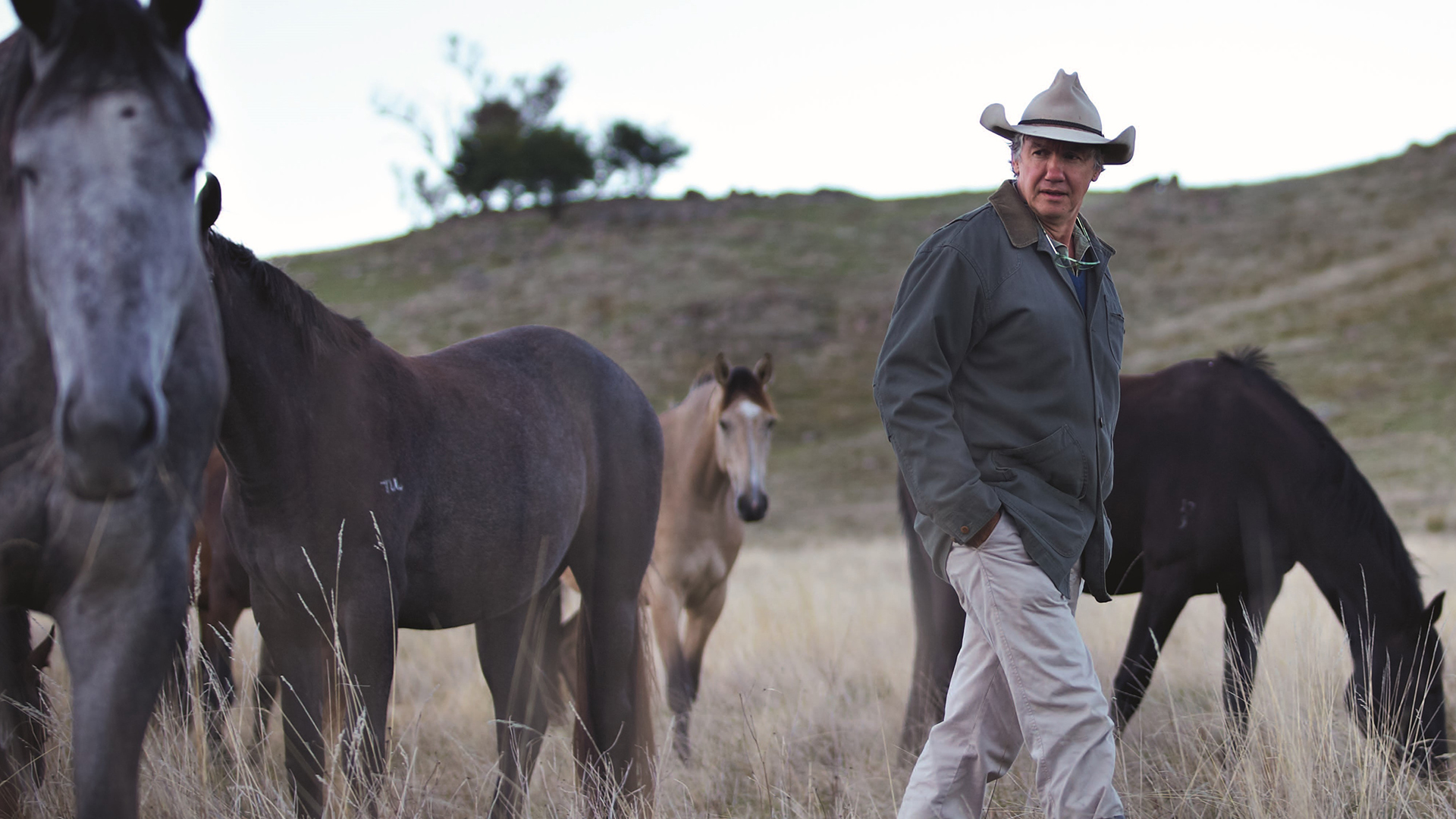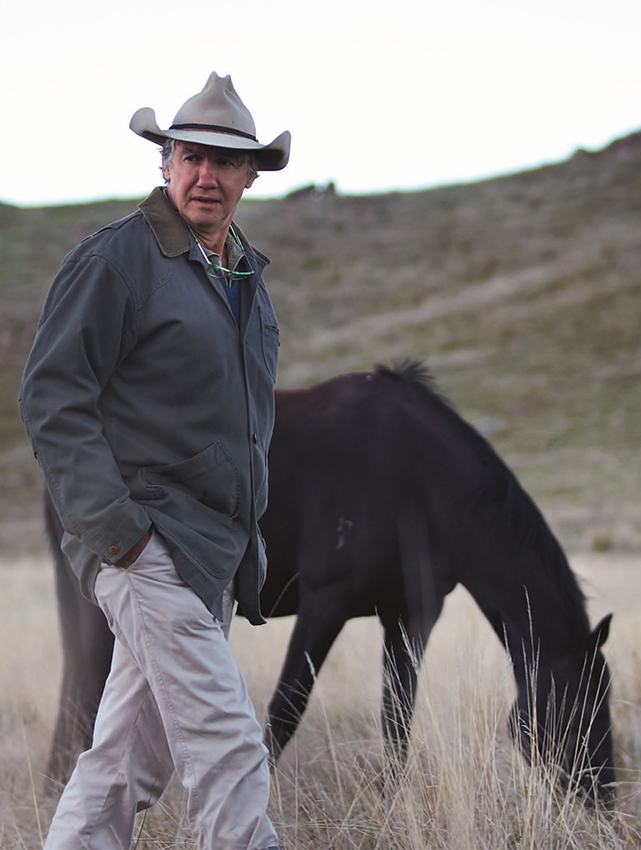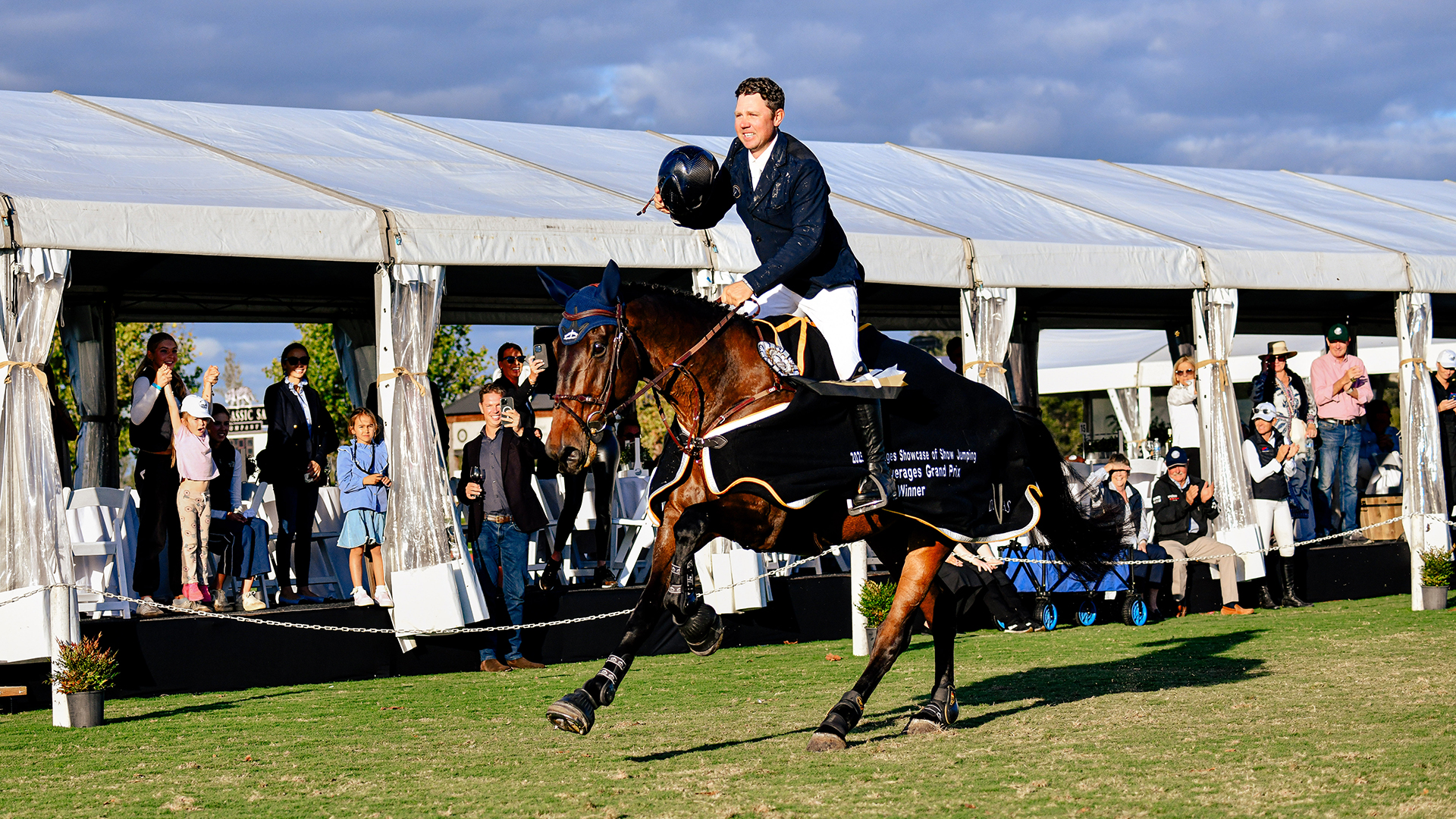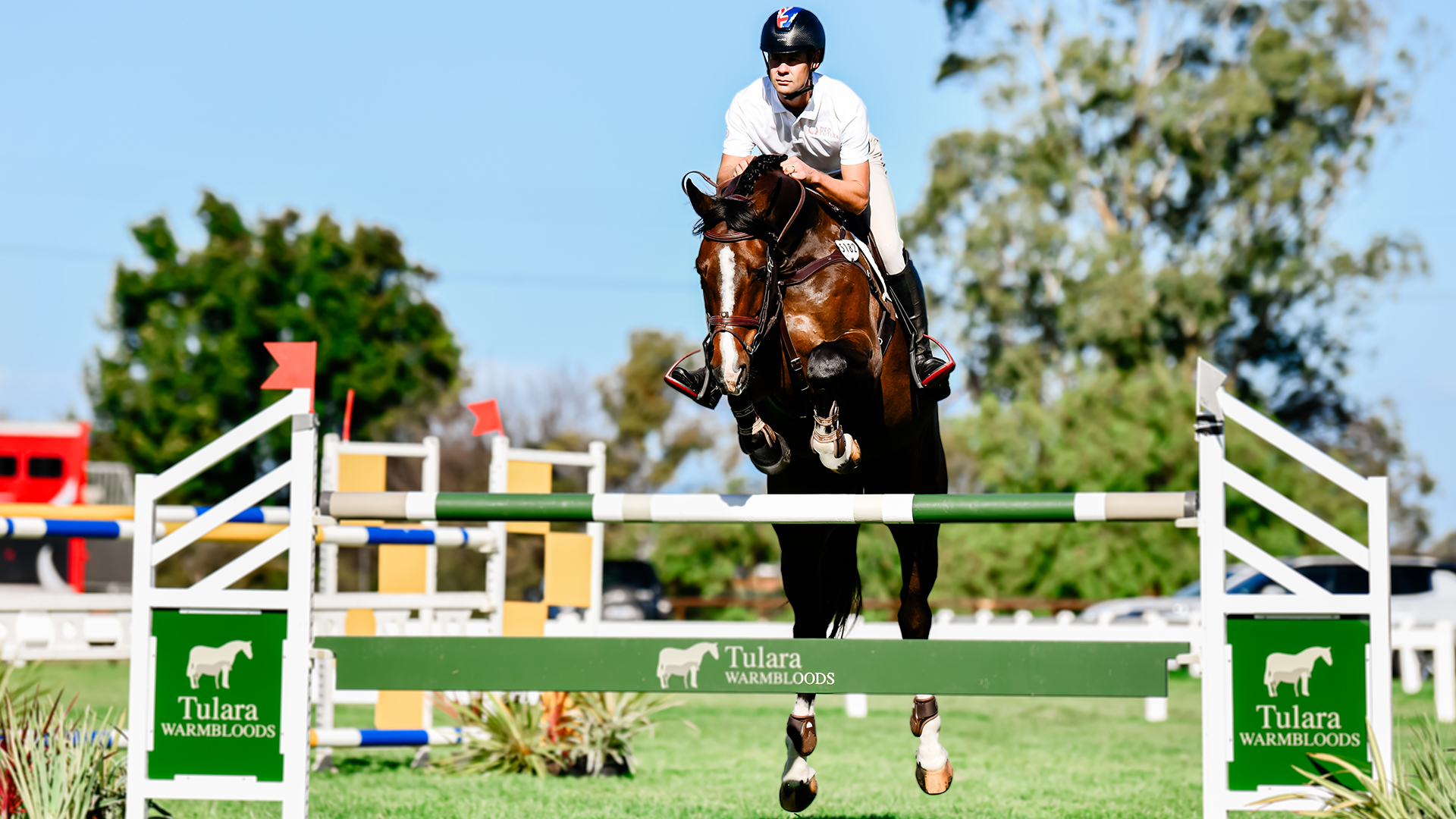The show jumping world was shocked and saddened to hear of the sudden passing of Tulara stud principal, Mark Fraser, who along with his wife, Anna, established probably the most successful breeding ground for show jumping horses in Australia.
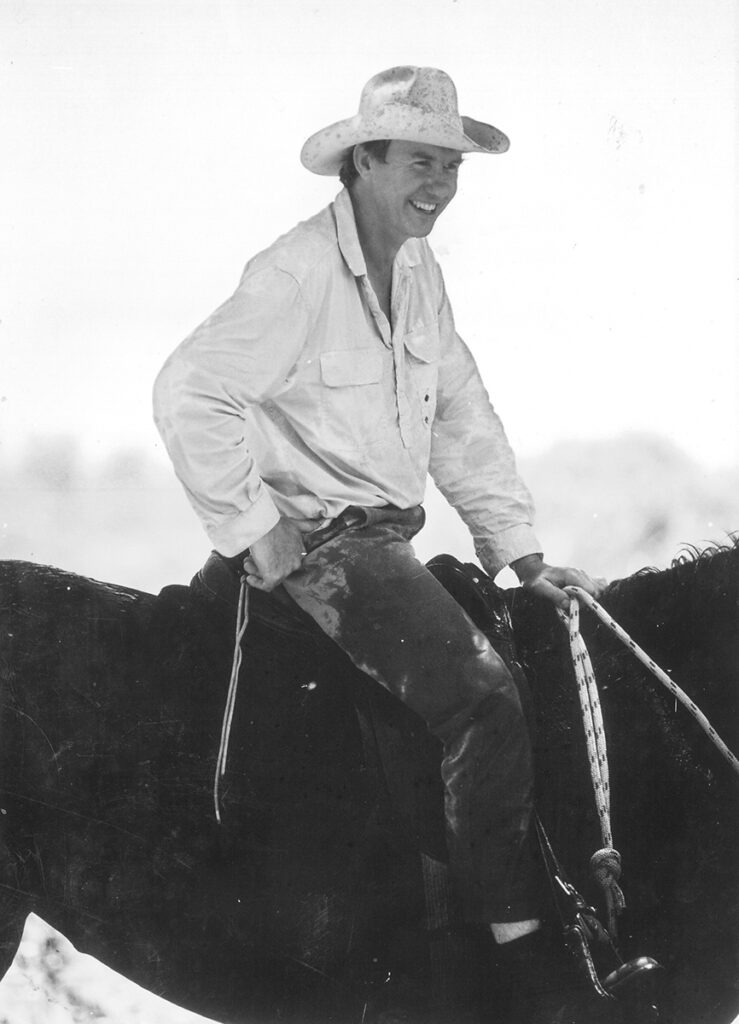
Mark Fraser (9.2.1958 – 9.2.2025).
Tulara Warmbloods have had success at the highest levels of the sport and have partnered with leading international riders on every continent. Tulara Colmine, in the USA with Georgina Bloomberg, Tulara WAT Colblensky dominating the part one at Sydney Royal this year with Jamie Winning, and Billy Raymont has the stunning Tulara Dakchico coming through to Grand Prix. You can often tell the pedigree of the horse from the name as Mark would make up names from the names of the sire and the dam’s sire.
“It’s likely that every top
rider in Australia has had
at least one Tulara horse.”
I think it’s likely that every top rider in Australia has had at least one Tulara horse. Even at the recent Adelaide Equestrian Festival, there were several out eventing: in the CCI4*S, Tulara Baltango placed second with Sophia Hill, while Tulara Chicouve was third with Hannah Kelp.
At the GDP Classic show at Boneo in February, one of the biggest fixtures on the calendar, 33 Tulara-bred horses competing formed a guard of honour around Mark’s iconic hat for a very moving tribute. They were led by Tulara Connector, one of the early progeny. It was as if the horses knew something sacred was happening as they all stood to attention for the eulogy.
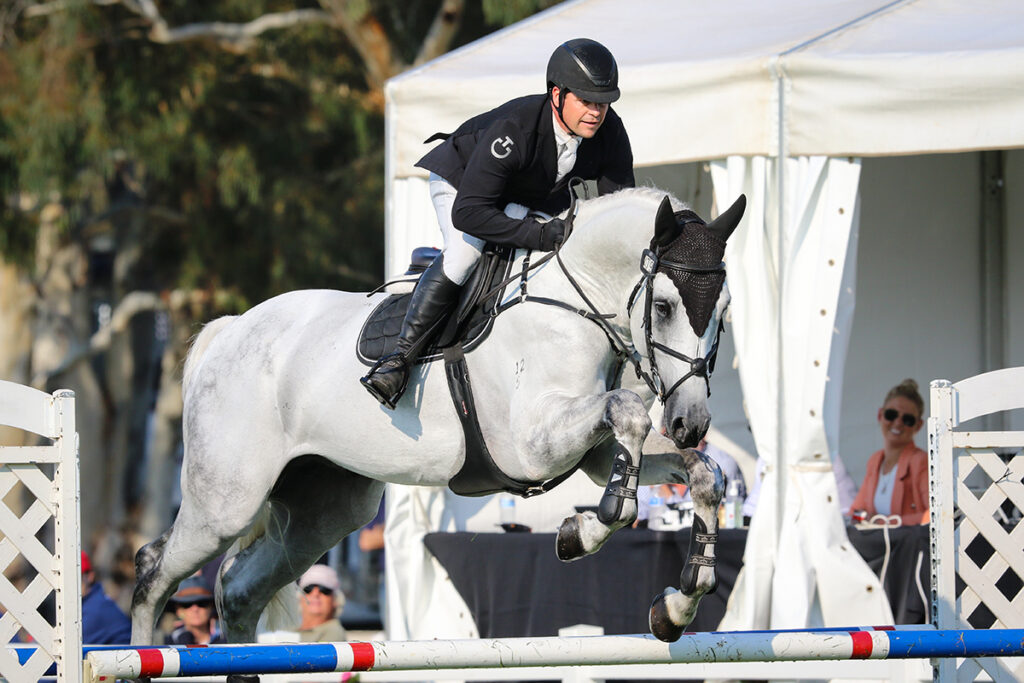
Tulara Dakchico, pictured here with Billy Raymont, is one of many very successful Tulara horses out competing. Image by Michelle Terlato.
So many of us had had the experience of driving up into Victoria’s high country near Mansfield to see his young stock. It was totally unique. Mark had his own ideas and did things his way. Tulara is a beautiful setting to breed horses. No, not the white post-and-rail fences you associate with the elite racing studs. Mark had big open paddocks with wonderful big gum trees, with horses in little herds. The hills at the back became steeper and the youngsters were able to gallop up and down. Mark believed that the very natural beginning helped make sound, athletic horses. No-one could disagree with him.
A visit to Tulara started with a chat about what you were looking for. You would meet Mark at the yards and head off for a tour of the horses. He would run the horses into his converted cattle yards with his motorbike. He would drive you around his paddocks showing you the mares and the foals, talking about each individual. He had some beautiful foundation mares, big roomy types with solid performance pedigrees. He generally would sell the colts, and often keep the fillies, breed from them and sell them later. This way he built up a band of excellent mares.
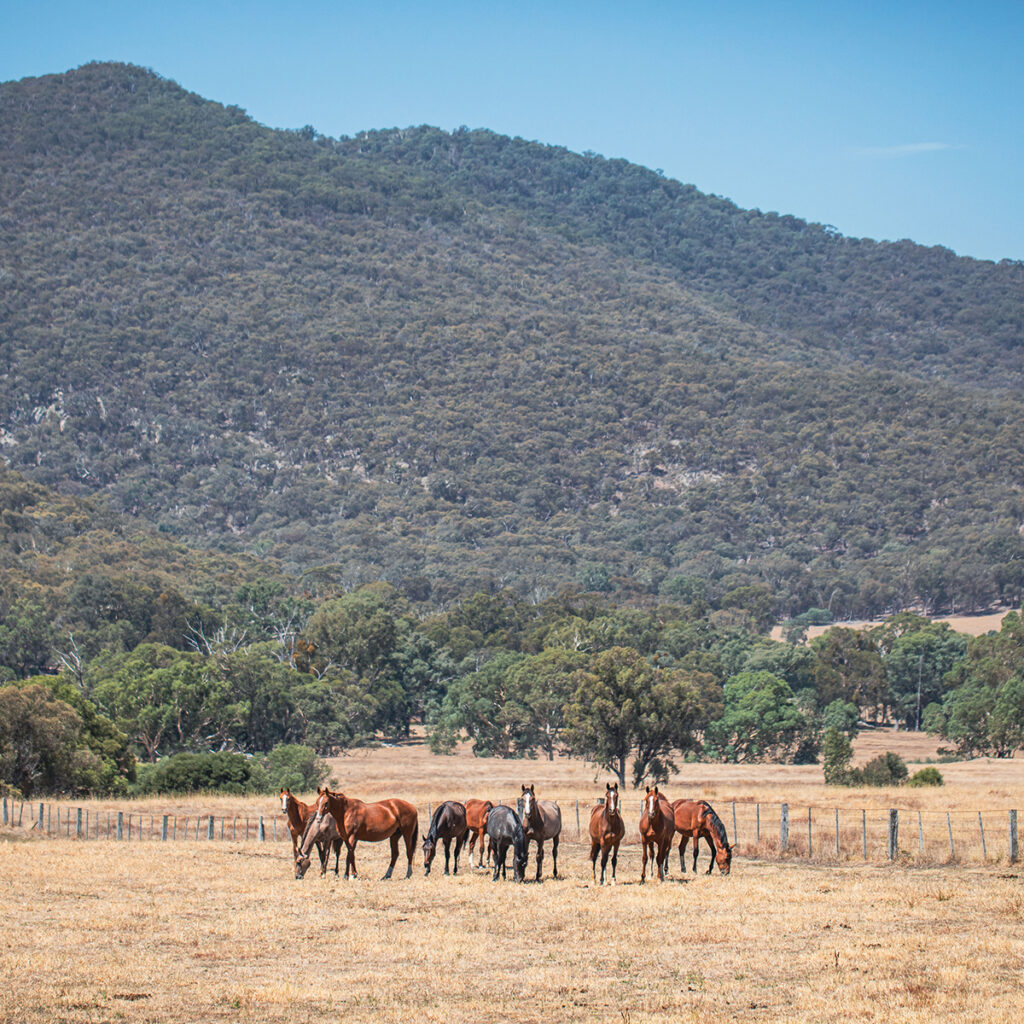
Tulara Warmbloods has big open paddocks with horses living in herds.
Mark would have the horses that he thought would suit the client in what looked like a pretty makeshift yard at the bottom of a hill on a flatter piece of land. If you liked the look of one, he would draft it off (or a foal and its mother) and they would go through his free-jumping lane.
Jumping technique is very heritable, and quite stable throughout life. Of course you can improve things with training, but just as dressage riders are looking at the quality of the basic paces and the balance in the transitions, jumping riders are looking for that open hind leg, powerful bascule and a positive attitude to the fence. The front legs should be tight, but training is more likely to improve the front than the back legs. So, what you see as a foal over a little cross rail gives you an idea of the technique the horse will show under saddle. Of course, a show jumper needs more than technique, but good style is a good start.
These horses were not over-produced. You couldn’t necessarily get near enough to touch them. But if you chose one or two then, by the time you went to pick them up, Mark would be able to get a halter on them and get them on the float. They weren’t exactly wild, just natural.
“We were best mates
and real partners in
everything we did.”
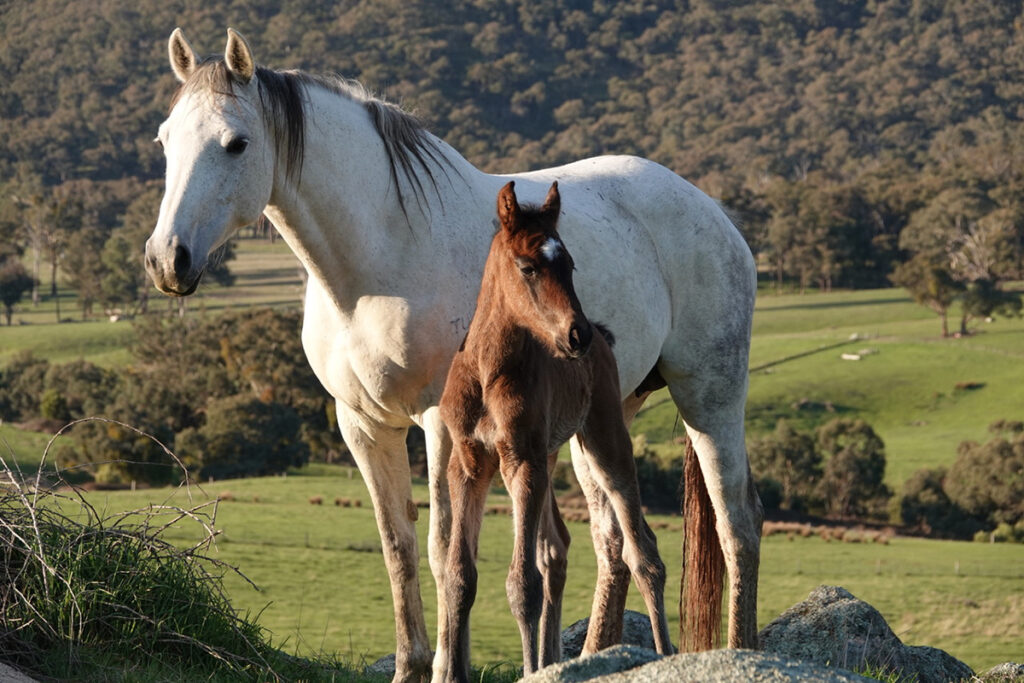
Foals have quite a natural upbringing at Tulara Warmbloods.
He did not come from a background of equestrian sportsmen. Rather, he was from the Western District of Victoria; mixed farming country. Nareen was his home. If that property name rings a bell, it’s because Nareen was famous for Merino sheep and for being the home of former prime minister Malcolm Fraser. Mark was Malcolm and Tamie’s elder son.
Mark married Anna Baillieu when he was 24 and she 23, and they went through life together, reinventing themselves several times. “We were best mates and real partners in everything we did,” Anna says.
ALWAYS UP FOR A CHALLENGE
Mark and Anna were always up for a challenge. Their ventures were always a success. He did an MBA in Lausanne, Switzerland, where they had a young family. He came back to the farm in 1987, but one thing led to another and one coffee shop in Sydney became 24, with up to 90 staff! He tired of city life and bought a bush block of 900 acres. “What should we breed?” he asked about 24 years ago.
Anna’s family had been involved in the King Ranch in Australia since the 1950s, a big, innovative Quarter Horse stud in Queensland, but the market in the 2000s was for Warmbloods. Mark was an intelligent man who took the business of farming horses very seriously. He was very hands on, not for him the life of the landed gentry, being the boss. He knew what he didn’t know and found experts to help him learn what he needed.
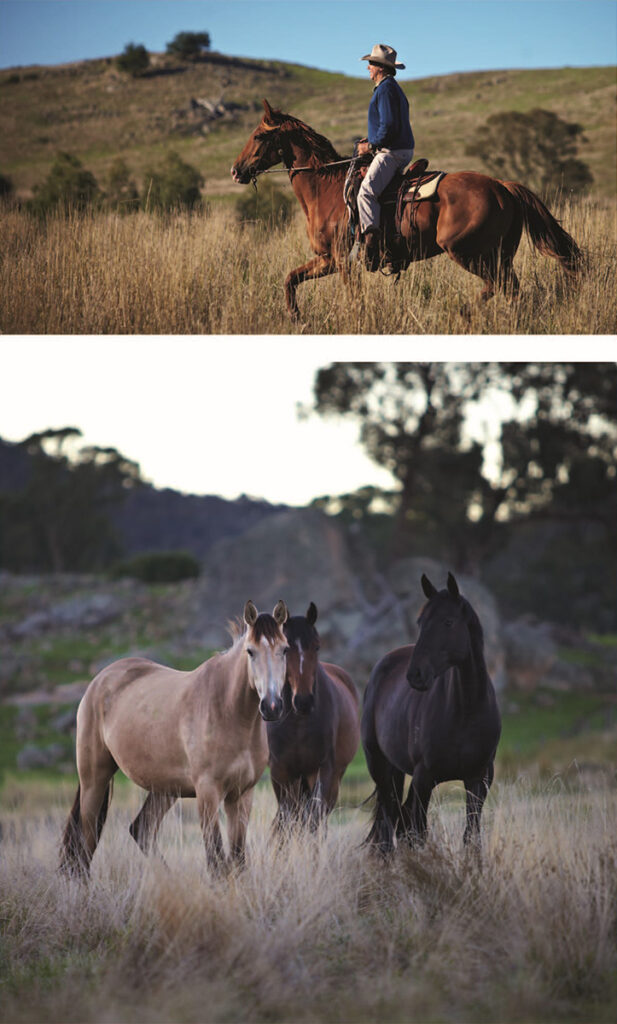
Top: Mark in the saddle at he and Anna’s property near Mansfield in 2012. Bottom: Young Tulara horses.
He went to a few professionals including Tony Uytendaal to help him get seven really super Australian mares. Initially Mark was breeding dressage horses and jumpers, but soon the jumpers became the focus. Mark learned to do the veterinary work and AI himself, having been involved in AI for beef some years earlier.
Mark had been a “jackaroo style of horseman” but realised he needed to develop his skills handling horses. At first a local helped him. Then he went to Cooma to work with Buck Brannaman. “They had the same energy,” Anna says. So Mark studied the Buck Brannaman videos and then would go to the horses and practise. He was very disciplined in his practise. He was an exceptional fly fisherman and used this skill to become proficient at roping his foals to get them started.
Mark and Anna bought a pub while building Tulara. “You’re a good cook,” he said to Anna and so soon the pub business expanded to a gourmet frozen meals business to provide some cash flow while the horses established themselves. A coffee shop in Young became a cafe and homewares venture and a lot of driving was the order of those days.
Meanwhile Mark was developing a great eye for the stallions. He and Anna would watch videos of the stallions in Europe and he would just choose what he liked. Anna says that because he didn’t have a background in show jumping, he developed a “clean” eye, seeing what was there, not what was influenced by the pedigrees and the hype. Mark wanted to breed tall, athletic, scopey horses for the big sport. More recently Mark was keeping some of his own colts to breed from. Sophia Hill has been producing some of these. Tulara Ziniero, Dakchico and Casciado and others are all quality.
“Mark’s goal was
to breed horses that
people could enjoy.”
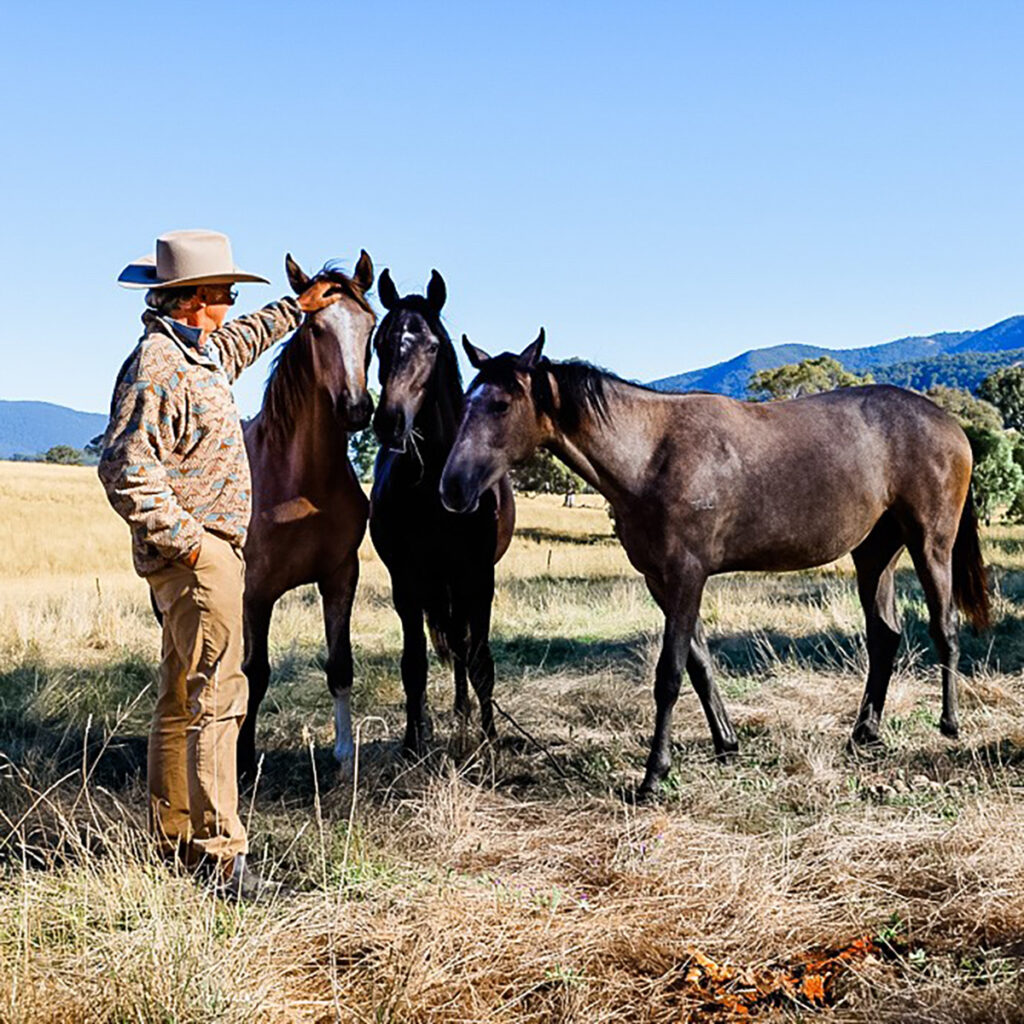
Mark with young Tulara horses.
TALL, SCOPEY HORSES
Anna says Mark’s goal was to breed horses that people could enjoy. He liked tall, scopey horses for the big sport, but he didn’t mind who bought them – top professionals or amateurs – as long as they enjoyed the horses.
Mark had strong values which he lived by. Family was first. Helping others was important to him and this generosity helped forge strong relationships with riders. “There was no bullshit with Mark,” Anna says. People recognised this and trust grew. Mark and Anna enjoyed friendships with jumping people all over the world. “It’s so exciting to see our foals competing,” she says.
There are now six generations of Tulara breeding since the first foals in 2002. Initially Mark would sell the colts and breed from the best fillies before he sold them. Mark and Anna always believed that the best mares were the key to a successful breeding program. Now there are 35 mares in foal for next season. The breeding program will continue as a family undertaking, with Anna at the helm. She is hoping to continue to grow the stud towards 45 foals a year.
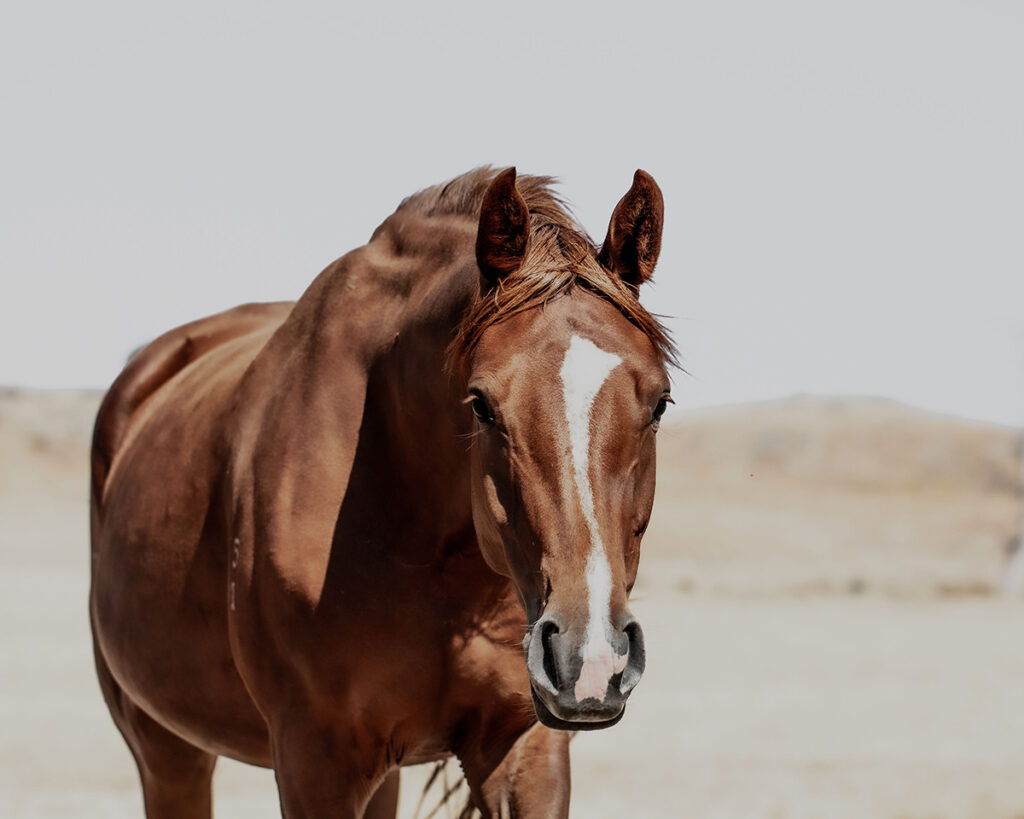
One of Tulara’s broodmares, Tulara Providence (Pegase van’t Ruytershof/Cascadello I/Colman/Carpaccio).
“There are now six generations
of Tulara breeding since the
first foals in 2002.”
Anna has previously tended to be in the background, but now she is leading Tulara into the future. No doubt there will be many more champions, many more best mates bearing the “TUL” on their shoulder, here and overseas. Mark will always be remembered for his contribution to our sport, a trailblazer, a man of integrity and vision.
As Jess Grant wrote in the eulogy at the GDP: “Thank you for everything you have done for us. Ride on, Mark Fraser.” EQ
